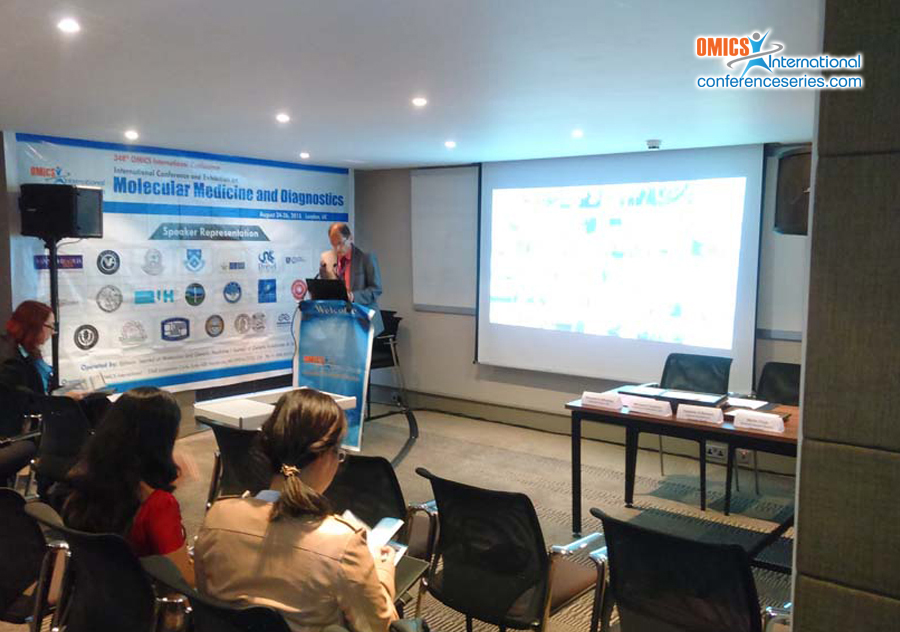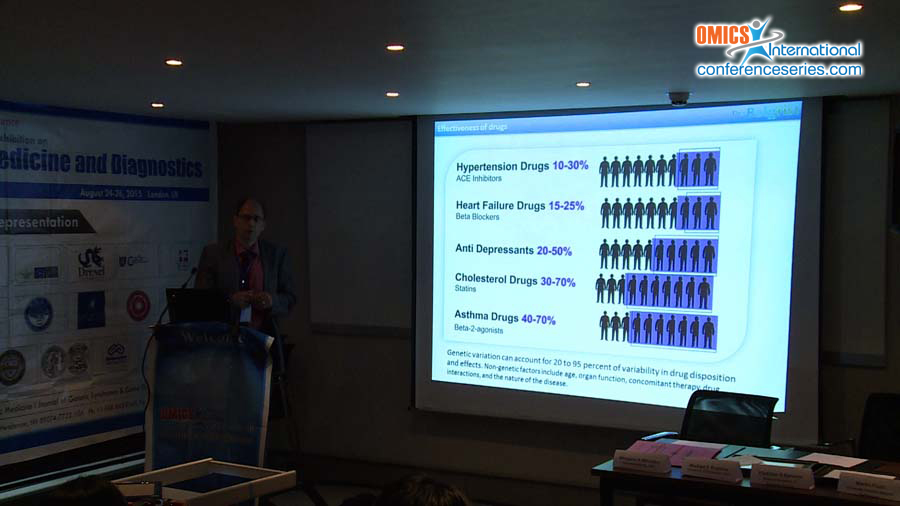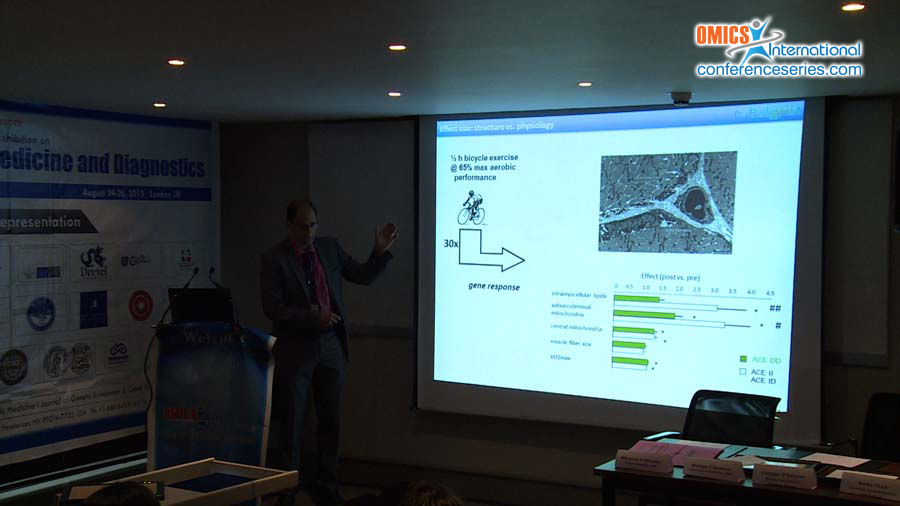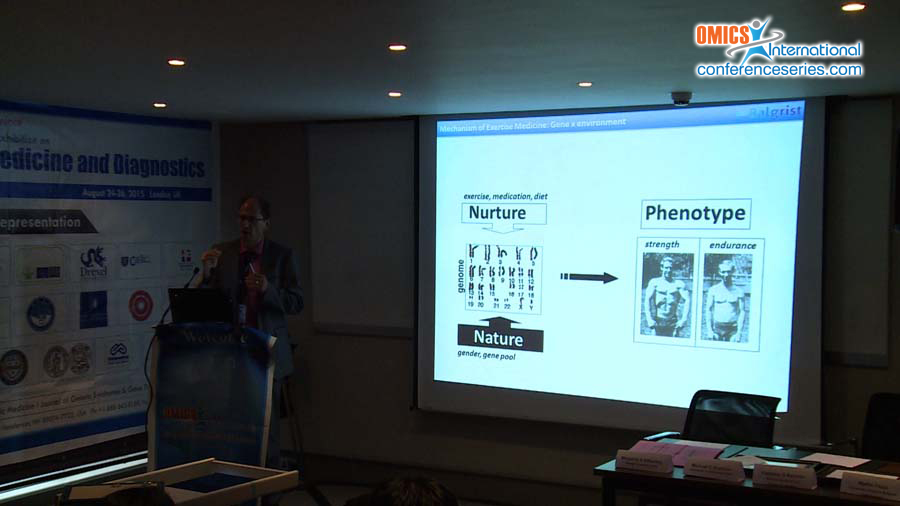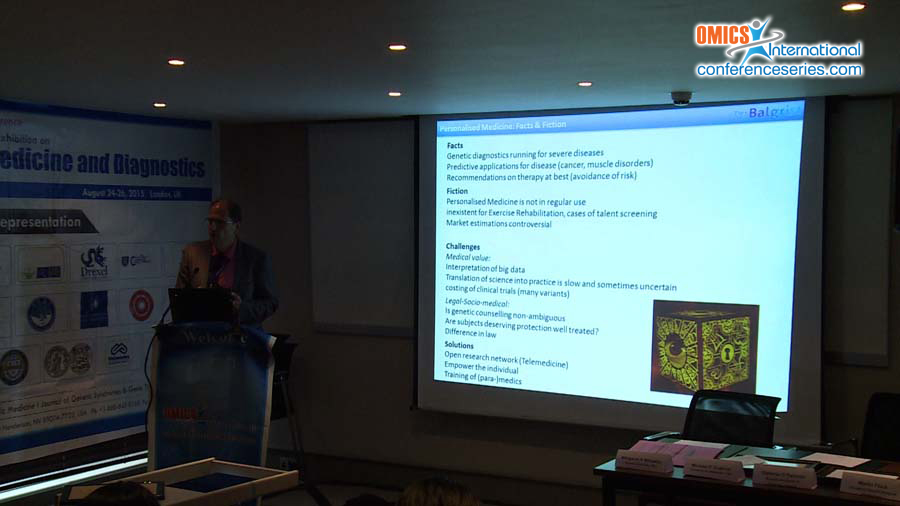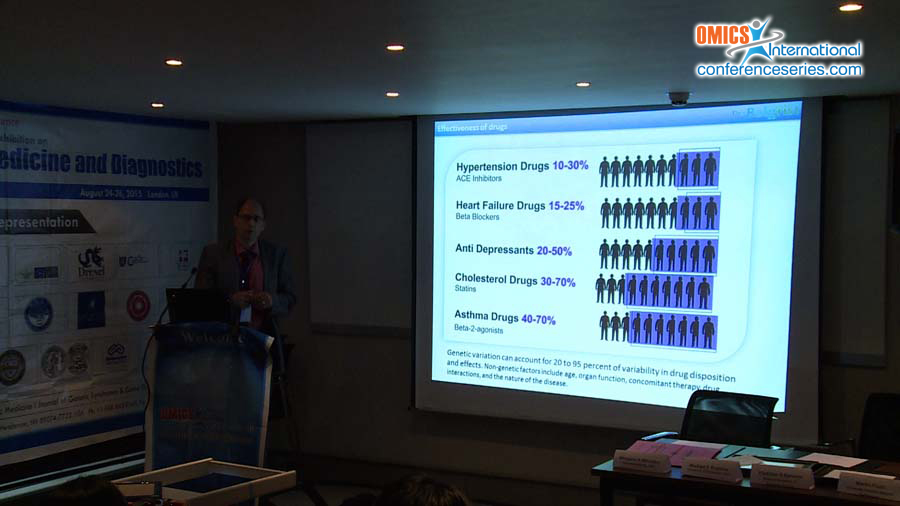
Martin Fluck
University Hospital Balgrist, Switzerland
Title: Exercise-induced muscle metabolism exposes genetic risk to develop diabetes
Biography
Biography: Martin Fluck
Abstract
Hypoperfusion of skeletal muscle due to resistance to insulin-mediated vasodilation is an early hallmark of a cluster of metabolic diseases that represent a major economic substrate for the medical industry. Absence of an insertion sequence (the I-allele) in the gene for the regulator of vascular perfusion, angiotensin-converting enzyme (ACE), is associated with reduced aerobic fitness and the development of type 2 diabetes. Our investigations identify out of norm elevations in serum glucose concentration after the metabolic challenge of exhaustive endurance exercise in ACE-DD genotypes that do not carry the ACE I-allele. Explorative assessment of the muscle metabolome and transcriptome exposed that the defect involves a reduced oxidation of glucose and compensatory adjustments in mitochondria-associated pyruvate and amino acid metabolism; all of which corresponded to a reduced muscle capillarisation and elevated serum levels of the ACE product, angiotensin 2. Compared to ACE-II genotypes, ACE-DD genotypes had a lower capacity for oxygen extraction during exhaustive exercise and the subsequent response in mitochondrial biogenesis was blunted. Anti-hypertensive treatment with ACE inhibitor pronouncedly modulated mitochondrial and angiogenic gene expression in exercised muscle. Our observations imply that the monitoring of glucose import and combustion in working muscle exposes the genetic risk of developing metabolic disease.

